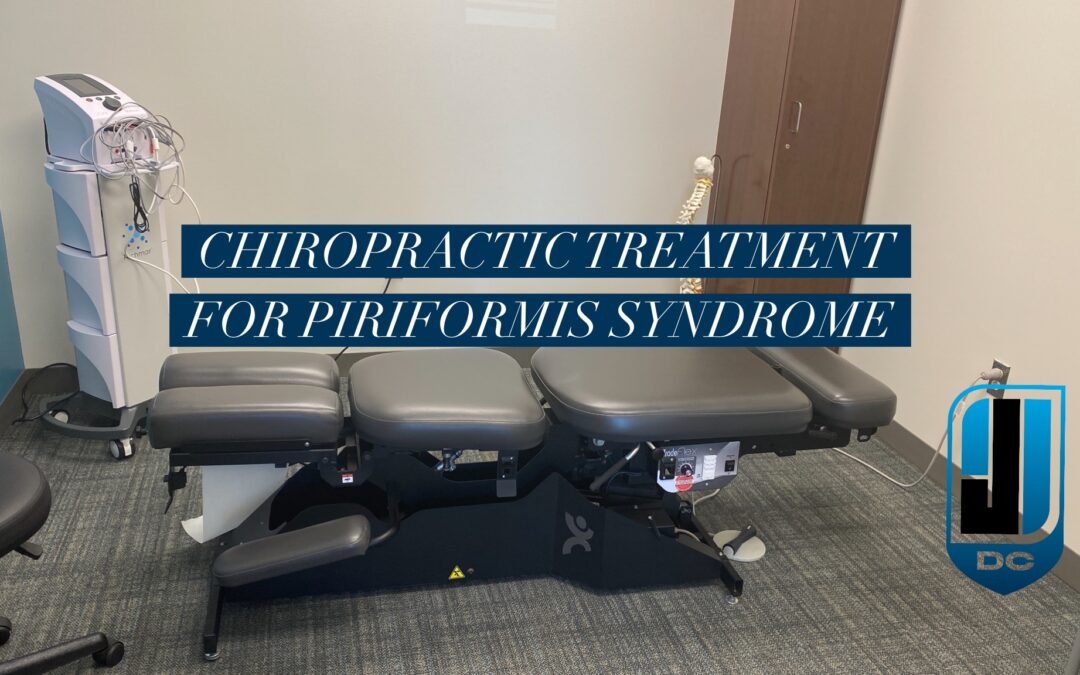Chiropractic treatment for piriformis syndrome is aimed at correcting movement and relieving irritation that is leading to piriformis pain. Many people don’t know that chiropractors do more than simply adjust their patients. In the case of piriformis syndrome, the toolbox of treatments that chiropractors use can effectively relieve pain and help you heal.
When I see cases of piriformis syndrome in my Dumfries, VA Chiropractic office, there are three treatments I often use. In this post I’m going to explain the best treatments for piriformis syndrome and how they help.
Struggling with a tight piriformis or piriformis syndrome? Check out the exercises in the article below and see if you can release it yourself!
Chiropractic Adjustments (Spinal/Joint Manipulation) for Piriformis Syndrome
This is the treatment most commonly associated with chiropractors. Adjustments restore movement to joints in the spine, pelvis, hips, knees, and ankles that are not moving well or moving in an incorrect way. IIf you are suffering from piriformis syndrome then it’s likely that you have an underlying mobility problem.
Adjusting joints with poor mobility is helpful for a few reasons. Research shows that chiropractic adjustments relieve pain, improves joint range of motion immediately after, and inhibits muscle tightness. If you’ve had treatment for piriformis syndrome and have not been adjusted, you’ve missed out on a really valuable treatment. You can stretch all day, but if you don’t get to the root of the cause, improvement may be extremely slow or non-existent.
Chiropractic adjustments are effective for piriformis syndrome, but they’re also extremely safe. Besides occasional post-treatment soreness, side effects are extremely rare when manipulation is applied correctly.
Stretching and Strengthening Exercises for Piriformis Syndrome
Stretching and strengthening exercises are crucial for healing from piriformis syndrome. When used with chiropractic adjustments, the combination is really powerful. It’s necessary to have a rehab exercise plan so chiropractic adjustments result in lasting improvement.
If you’ve tried chiropractic for piriformis syndrome, or even physical therapy for piriformis syndrome, and haven’t been treated with adjustments and exercises in combination then you’re missing out these treatments can help in combination.
It’s important to see a chiropractor who can prescribe and guide you through a progressive plan of stretching and strengthening exercises. If you’re simply trying exercises you found online, you’re essentially shooting in the dark. What you really need is someone to give you stretching and strengthening exercises at the right time and then guide you through a progressive plan as you improve.
Piriformis syndrome is a form of sciatica where the piriformis is compressing the sciatic nerve. This can cause pain in the buttocks and back of the leg. Sciatic flossing exercises are a great exercise to “free up” the sciatic nerve. Check out my video here!
Acupuncture or Dry Needling for Piriformis Syndrome
Many chiropractors, including myself, use dry needling and acupuncture to effectively treat piriformis syndrome pain. I can attest that using acupuncture or dry needling in my patients with piriformis syndrome speeds up the healing process and often brings some immediate improvement.
Using needling to target and release trigger points (tender knots in the muscle) can help relieve the compression that the piriformis is causing over the sciatic nerve. Since the piriformis is a deep muscle in the buttocks, needles are able to get deep enough to relieve piriformis pain. Acupuncture and dry needling also stimulate a new healing response in cases of piriformis syndrome that are chronic. Oftentimes, piriformis pain feels really deep in the buttocks. It can be hard to get deep enough to relieve it with a foam roller or lacrosse ball.
Similar to chiropractic adjustments, acupuncture and dry needling is very safe when used appropriately. Although you may be nervous about needles, the needles used in these treatments are thin and small. If you’ve tried other treatments for piriformis syndrome, I would encourage you to consider acupuncture or dry needling.
Can Chiropractic Help with Piriformis Syndrome?
The ultimate question is can chiropractic help with piriformis syndrome? The short answer is yes, it can help it resolve and it’s absolutely appropriate to see a chiropractor for piriformis syndrome.
I can say, anecdotally, almost all my patients with piriformis syndrome have gotten relief with chiropractic care and most have had it resolved with care. Chiropractic care for sciatica has been well researched and shown to be effective, and piriformis syndrome is simply a unique form of sciatica.
You don’t have to take my word for it. Here’s a published case report of chiropractic care relieving piriformis syndrome in a military veteran:
I’d go as far as to say that a good rehab-focused chiropractor is the best doctor to see for piriformis syndrome. Chiropractors provide safe, effective, and cost-effective treatments to relieve piriformis pain. If you’re looking for help, I practice at Sentara Therapy Center as a chiropractor in Dumfries, VA.

Jason Williams DC is a licensed Doctor of Chiropractic with Physical Therapy Modality and Acupuncture privileges. He is a chiropractor in Dumfries, VA at Sentara Therapy Center. Dr. Williams’ clinical expertise is in the evaluation, treatment, and rehabilitation of neuro-musculoskeletal conditions. Specific focuses include spinal, extremity, and sports-related complaints. He brings a patient-first attitude to his treatments and is a proponent of evidence-based and integrative care. See more content and his contact info here.
The opinions and views are mine personally, and do not necessarily reflect the views of others in the profession, my employer, or organizations that I belong to.


